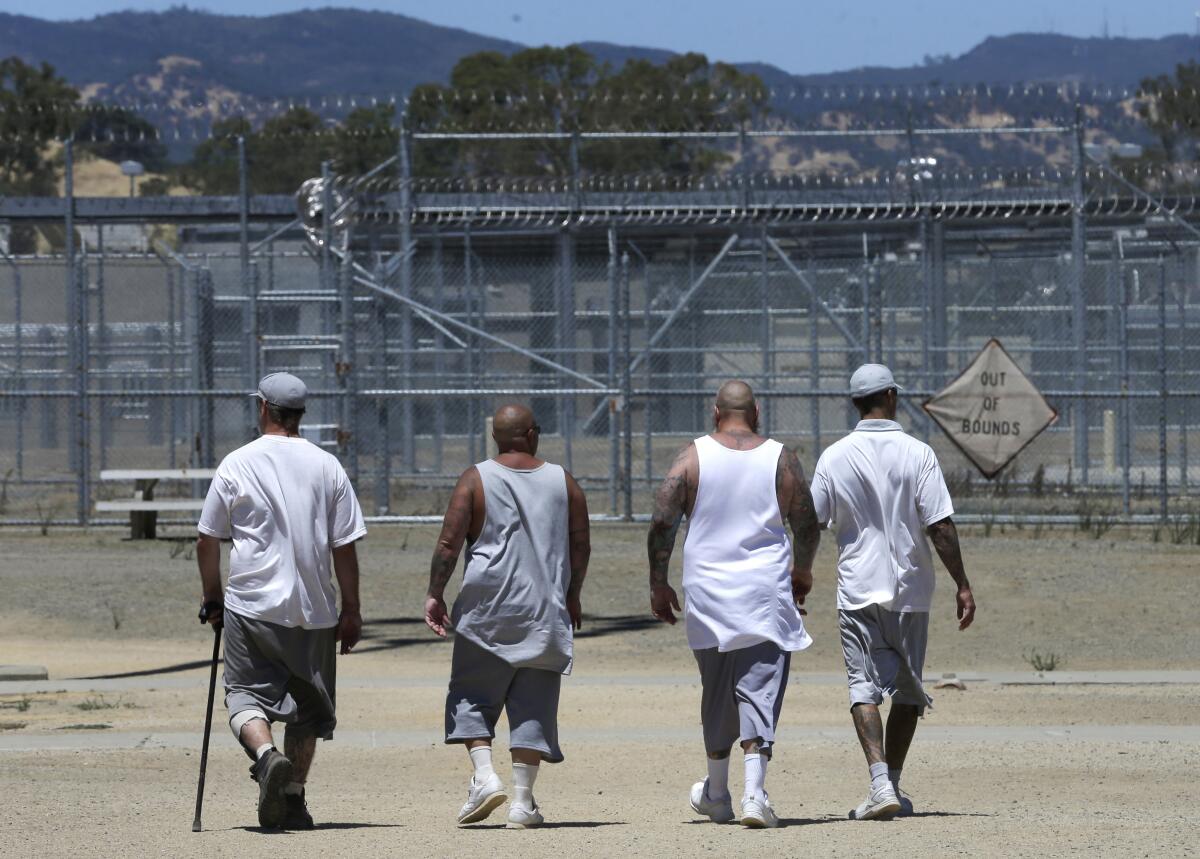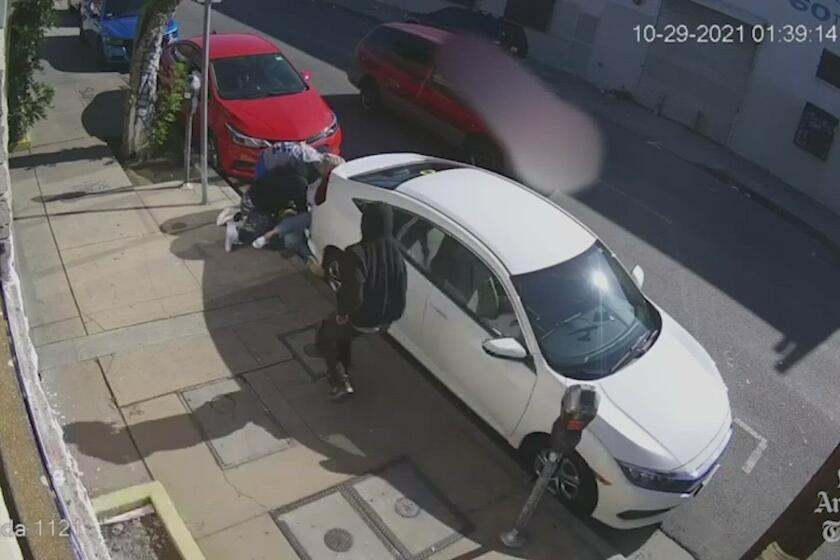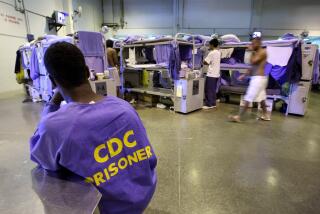If California really wants to reduce crime, not just talk about it, it’ll cost $42 million

- Share via
The dozens of people who had crammed into a room in South Los Angeles grew quiet as mayoral candidate Rick Caruso took the microphone. Then rapt as he eased into the crux of his stump speech.
“Crime is at an all-time high,” he began, drawing nods and a few murmurs of “amen.”
“I pulled some numbers I got. I wrote them down because I want to make sure I have them right because they’re so staggering,” Caruso continued, rattling off statistics on homicides and shootings without context or citation. “I’m sorry. It’s out of control. We’ve got to fix it.”
One would think that such vague tough-on-crime rhetoric would’ve lost its appeal in California by now — especially in Los Angeles, where the latest polling shows Caruso badly trailing his more progressive opponent, Rep. Karen Bass. And yet, it clearly hasn’t.
Politicians up and down the state continue to placate an apprehensive public, staking out opposing sides of the ideological spectrum to talk about reducing crime, while often shying away from specific, sustainable solutions.
Examples of this abound. But, at the moment, there’s no more egregious one than the apparent hesitancy of Gov. Gavin Newsom to back common-sense legislation from a fellow Democrat, state Sen. Sydney Kamlager of Los Angeles.
LAPD officers are behind some $2 million in ads to stop the congresswoman from becoming mayor. It should be a wake-up call for reluctant progressives.
Her Senate Bill 1304, which cleared the Legislature and is awaiting Newsom’s signature, would raise the amount of money that the California Department of Corrections and Rehabilitation gives people when they’re released from prison.
Right now, that amount stands at a paltry $200 — a sum unchanged since 1973. That’s four years before I was born, when gas cost 39 cents per gallon and the median price of a home in California was $31,460.
Kamlager’s bill would increase this so-called gate money to $1,300 per formerly incarcerated person. And then, starting in 2024, that amount would rise to keep up with the inflation. By her staff’s back-of-the-napkin math, this would add up to about $42 million annually at first, a jump from the $8 million that’s currently coming out of the state’s general fund.
Now I know what you’re probably thinking: How does giving formerly incarcerated people more money help fix our supposedly “out of control” crime problem in California?
A lot more than blaming progressive prosecutors like Los Angeles County Dist. Atty. George Gascón, for starters.
Those who work in crime prevention and intervention all say the same thing: The first few days after people get released from prison are the most critical. Whether they stay out of trouble or turn back to crime often depends on resources.
How much money they have. How much support they have from family and friends. Whether they have a place to live.
“Most people when they think of gate money, they think of it as rewarding a criminal for completing their prison sentence, rather than a very basic safety net that actually mitigates recidivism,” Kamlager said.
And, as safety nets go, $200 doesn’t go very far.
Pay for pants, a shirt and a pair of shoes to wear when leaving prison. Shell out $60 for a bus ticket home if no one can give you a ride — a common occurrence since so many people from cities are locked up in far-flung rural prisons. Spend a little more for a new driver’s license and Social Security card. Maybe a motel room.
Suddenly it’s all gone. And then what?
“And then you demand that they be successful, stay out of trouble and don’t get involved in some of the same behavior that got them maybe locked up in the first place,” Kamlager said. “That’s just a formula that doesn’t make any sense.”
Studies link income inequality and crime. Just look to L.A., where thousands are homeless, and people get robbed of watches worth enough to buy a home.
Tim Kornegay has been waiting for politicians to figure that out. As director of LIVEFREE California, a crime intervention and advocacy coalition, he spends his days in Los Angeles talking to Black and Latino men who are trying in vain to make that $200 work.
“It will become $10 in a matter of hours, and that’s when the desperation starts to set in,” he told me. “And that’s when individuals start to get scared. So when you ask what am I hearing from folks with that $200 that don’t have a support system, it’s fear. It’s ‘What am I gonna do?’”
None of the vague, tough-on-crime rhetoric coming out of the mouths of politicians can answer that question. Kornegay knows because seven years ago, he was the one being handed $200.
But $1,300?
“It will give an individual an opportunity to breathe. I know I can sit down, buy a couple of pair of pants and some shoes and a shirt. Get a hotel room for a couple of days, until my auntie, my mama come back from vacation. I’m gonna be all right.”
More than that, it will give formerly incarcerated people a “sliver of hope to get them past the desperation to a point where they’re comfortable trying to figure out how to be a free person.”
::
As much as politicians in California talk about reducing crime and supporting criminal justice reform, they’re doing neither if they aren’t helping formerly incarcerated people reenter society without committing crimes again just to make ends meet or avoid homelessness.
This is especially important here in Los Angeles, because, as the most populous county, we send the most people to state prisons and, therefore, will get the most people back.
And yet, as I write this, zero money has been set aside for Kamlager’s bill. Not from the state’s general fund and not from the California Department of Corrections and Rehabilitation’s budget.
The senator is looking to Newsom to remedy this.
“We find all sorts of ways to fund all sorts of other things,” Kamlager told me. “I would think it would make sense for us to figure out a way to give folks a little bit of extra money when they leave, so that they don’t come back.”
I’m inclined to agree. Given California’s ginormous $300-billion budget, $42 million isn’t much.
Newsom’s office, unsurprisingly, declined to comment.
Kornegay, who proudly talks about registering residents from in South L.A. to vote for Newsom when he ran for governor, is holding out hope.
“You can’t make somebody become a criminal due to desperation and lack of economic opportunities,” he said, “and then punish them for acting in a manner that you know is going to take place.”
More to Read
Sign up for Essential California
The most important California stories and recommendations in your inbox every morning.
You may occasionally receive promotional content from the Los Angeles Times.













